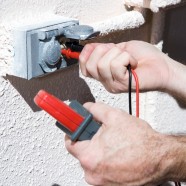
Florida’s power systems are taxed more than most states because of the extraordinary amount of lightning that strikes the state each year. You don’t need bad weather to experience power fluctuations, though. Voltage can ebb and spike for multiple reasons, causing anything from mild annoyance to life-endangering problems. The aim of the electrical protection plan is to isolate and fix the problem while keeping as much of the system running as usual. Different problems call for different solutions, but they all work together to keep the power running as normally as possible.
Transformers
Electrical voltage may vary between the power station and your home or business, and transformers work to raise or lower the voltage to the desired rate. They’re the first defense against overloading and brownouts, making use of electromagnets to keep the power steady as it feeds into your building. The resulting power is easier for the relays and breakers in your home or business to deal with.
Protective Relays
Relays are the electrical protection mechanisms that sense an increase in the power supply and trip the circuit breakers. When the power surges too high it can create a fire hazard. Relays prevent that by breaking the circuit through the use of breakers. They’ll work continuously, tripping the same breaker over and over again until the cause of the surge or excess draw is corrected or removed.
Circuit Breakers
Circuit breakers are the workhorses of the power system protection group. Connected to a system of relays, when the power surges too high it will trip, cutting off the power and saving delicate electronics you own. Power won’t flow through an incomplete circuit, and the relays in a circuit breaker are the simplest types to use.
In older buildings there may be a fuse box that employs a system of fuses that burn out when the relay trips. These have to be replaced, though, making the circuit breaker switches a great improvement. Circuit breakers can be simple setups serving only one outlet, as in ground fault circuit interrupters (GFCI) or in a traditional circuit breaker box panel that controls a series of circuits throughout the building.
Back Up Power Supplies
For homes and businesses with one or two computers, a battery operated backup system can be the perfect solution to surges and power outages. These devices are a link between the computer and the wall outlet. If the power goes out a battery backup system instantly creates enough power to run the computer or appliance for about half an hour. This gives you time to shut the computer down properly without losing important data. It also acts as a buffer, preventing surges from damaging delicate data storage. Most of these backups have rechargeable batteries installed, and constantly recharge themselves from the outlet power.
Lightning Protection
All the back power in the world won’t handle a direct lightning strike on your building. Air terminals, what used to be called lightning rods, focus the lightning’s power away from the building and directs it into a grounded area outdoors. It’s a myth that air terminals attract lightning. What they do is to protect your property from any lightning that does happen to strike. You can install lightning protection on your home or business, and can even have specialty protection added to important landscape details such as tall trees and large shrubbery.
Generators
Backup generators don’t prevent a power surge or dip from happening, but when there is a loss of power they immediately start up, preventing the damage that sharp dips and rises in the power system can do to computers, stereo systems, medical devices, and other items that need a constant power source. When your business or your health depend on keeping a constant power supply, it’s crucial to install a reliable backup generator capable of putting out enough power to run critical systems in your building.

Recent Comments